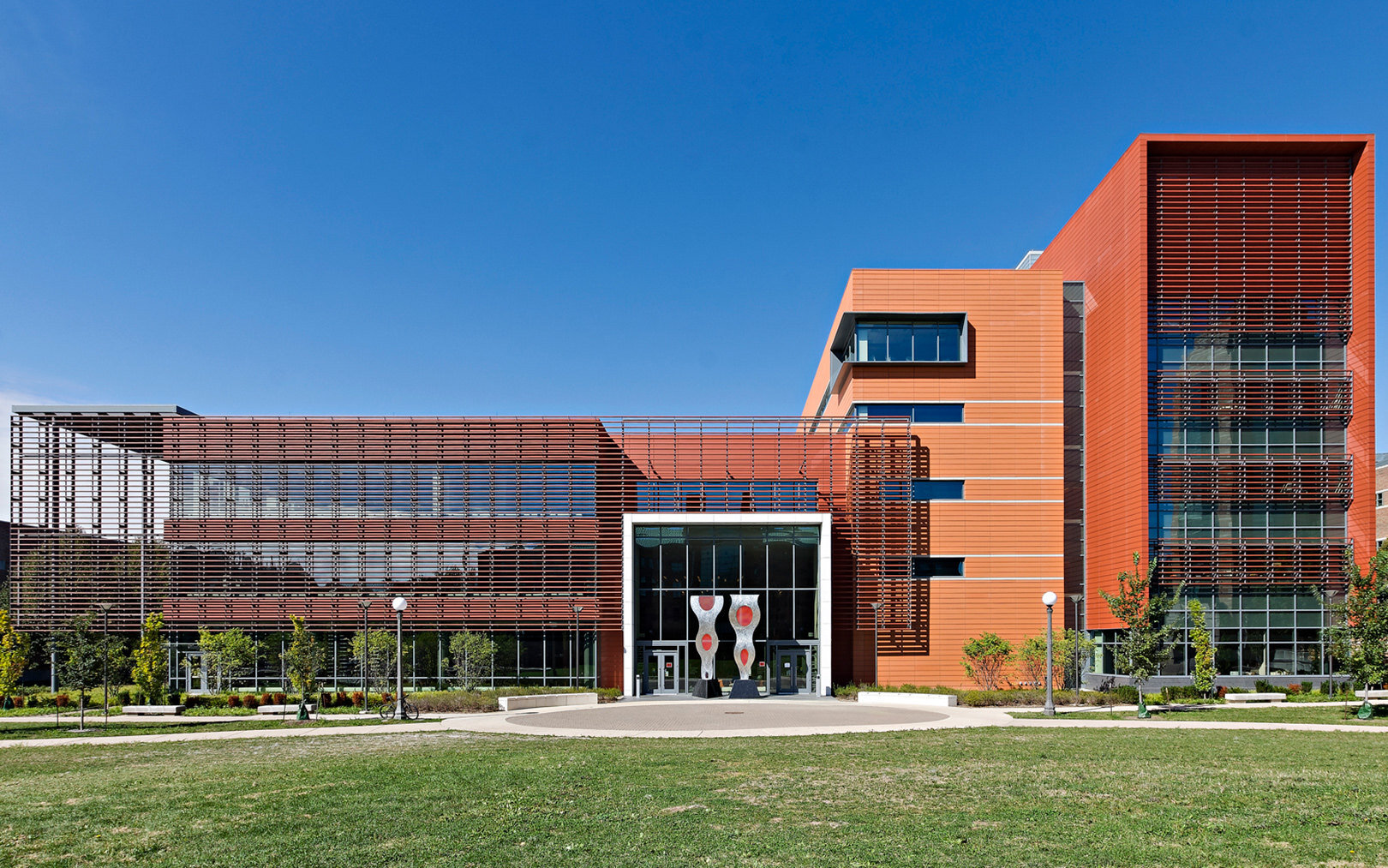
ECE 590
Remote Sensing and Space Science Seminar
Effective technical communication is an important aspect of an engineering career. This skill can be significantly improved with proper training, and that this training should be part of a graduate education that prepares students for the next stages of their careers.
The seminar acts as a forum for the students in the RSSS group to practice their research presentations and elevator pitches, and provides a space for open conversations about various topics impacting career paths, such as academic integrity, implicit bias, deciding what’s next after graduate school, etc.
The seminar also serves as a platform for professional development, as the discussions set clear standards to incoming students, introducing them to the inner workings and expectations of the academic and engineering world.
ECE 590RSS provides a space for students to connect and learn from each other's research, but also a space for growth and for students to form a sense on community. In addition, accommodates guests seminars by visiting researchers.
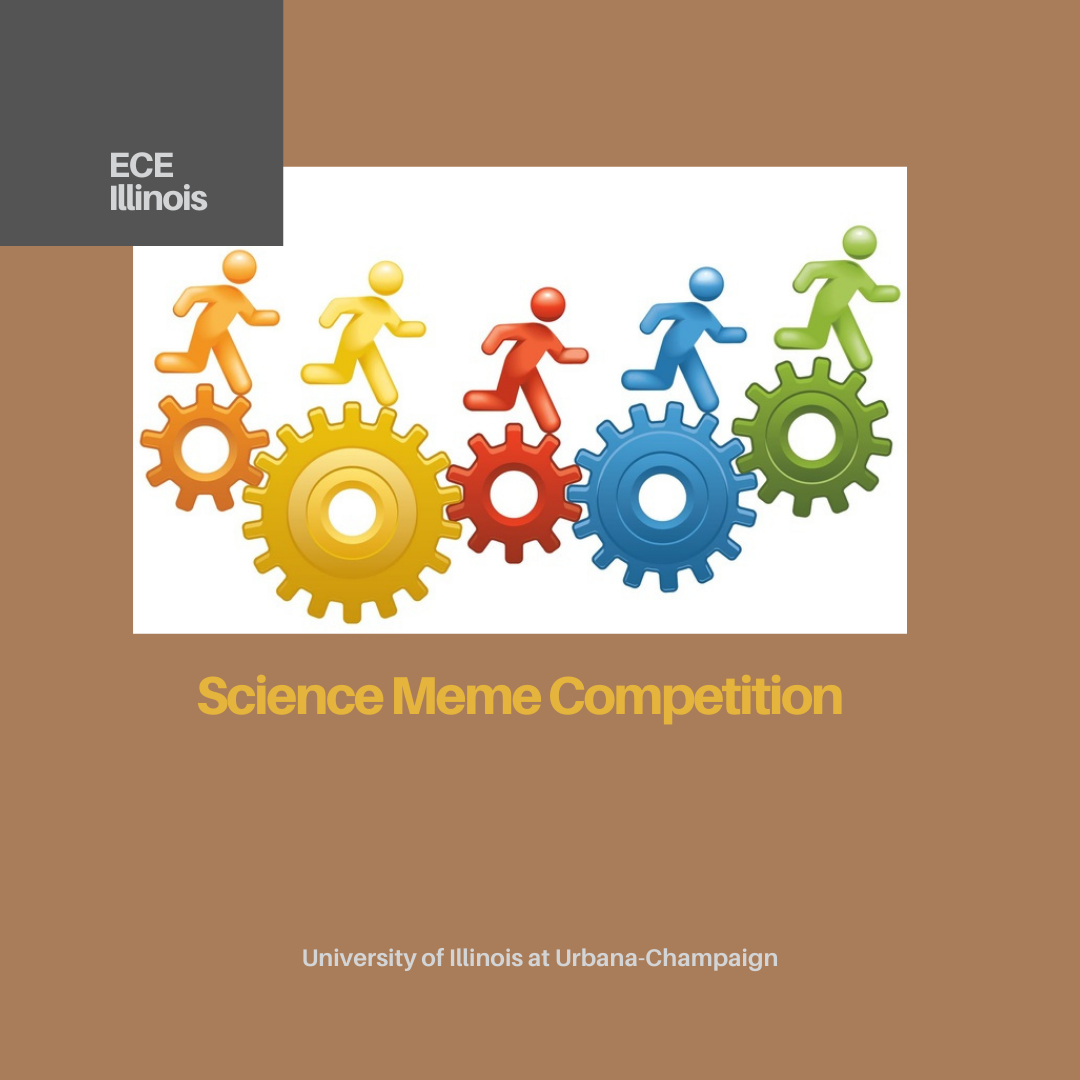


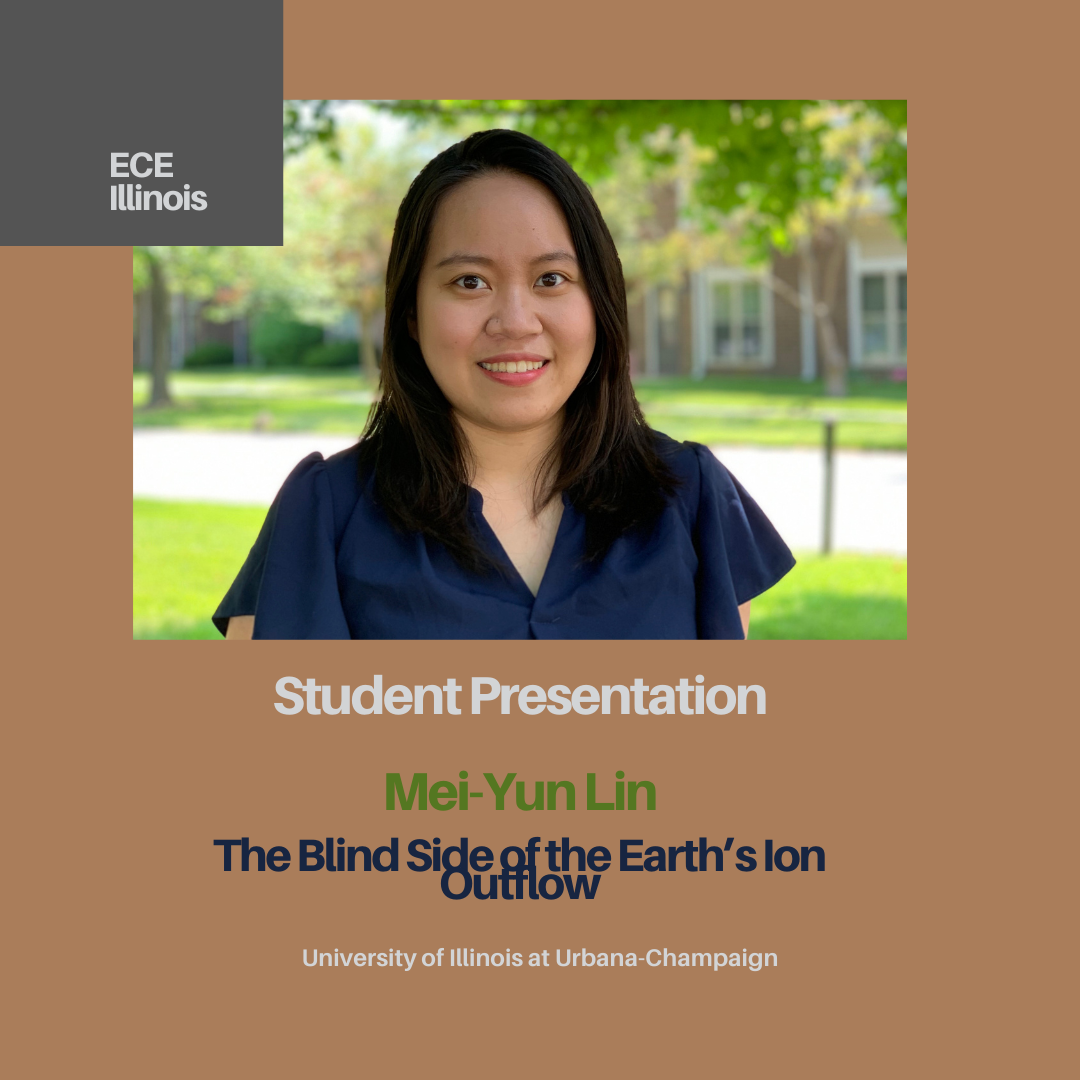
Student Presentation
Speaker: Mei-Yun Lin
Title: The Blind Side of the Earth’s Ion Outflow
Abstract: Atomic N+ and O+ as well as molecular N2+ NO+ and O2+ ions are the major ion species in the Earth’s low altitude atmosphere. While numerous studies have focused on the dynamics of the ionospheric O+ ions, the relative contribution of outflowing N+ and molecular ions is not well understood at this time most likely due to limiting capabilities of instruments flying in the space to distinguish between the two species. However, the existing observational records suggest that N+ are constant companions of outflowing O+ ions, and during geomagnetically active times the increase in molecular ions were often accompanied by a high ratio of N+/O+in the Earth’s ionosphere-magnetosphere system. To understand how these heavy ions, other than O+ ions, acquire the sufficient energy to escape the Earth’s atmosphere, we have employed the Seven Ion Polar Wind Outflow Model (7iPWOM), a first-principles physics model, to study how they are produced and transport in the polar wind.
Numerical simulations suggest that N+ and molecular ions play a key role in the polar wind plasma from few hundred kilometers to thousands of kilometers in the space. The abundances of N+ and molecular ions in the polar wind could be largely altered by including the additional chemical reactions in the Ionosphere F region as well as the expanded Suprathermal Electron (SE) production. Validated with previous studies as well as observational records, the inclusion of N+ and molecular ions also leads to the better numerical solution. The energization of these heavy ions in the polar wind is also investigated. Wave-particle interactions could potentially provide sufficient energy to allow these heavy elements escaping the Earth’s atmosphere once produced by the photoionization, even though the molecular ions have the short dissociative recombination lifetime. This indicates that tracking the heavy ions, other than O+ ions, helps understand the energization of ion outflow and assess the role of heavy ion outflow in the overall dynamics of the polar wind.
Bio: Mei-Yun is a Ph.D. candidate in HeRA group within the Department of Electrical and Computer Engineering in University of Illinois at Urbana-Champaign advised by Prof. Raluca Ilie. Her primary research focus is understanding the acceleration mechanisms responsible for ionospheric outflow and its impacts on the magnetospheric dynamics. Before coming to the United State for graduate school Mei-Yun obtained the bachelor’s degree in the Department of Electrical Engineering from the National Taiwan University in Taiwan where she is originally from. She has been awarded the NASA FINESST fellowship in 2021 to continue her research on the contribution and the energization mechanisms of heavy ions in the polar wind. Her works had also been recognized by the American Geophysical Union where she was awarded the Outstanding Student Presentation Award in both 2019 and 2020. Other than research, Mei-Yun currently serves as the Student Representative of the NSF Geospace Environment Modeling Program.

Invited Seminar
Speaker: Rebeca Pop
Title: An introduction to designing accessible data visualizations
Abstract: Imagine this: you’re at a conference. You’ve been handed a graph summarizing important data, which you have to relay to other classmates. Your heart sinks when you realize: this visualization wasn’t created with you in mind. You’re color blind, so you can’t see what the graph is trying to tell you.
Rebeca Pop, founder of Vizlogue, a data visualization and storytelling lab, will teach you the fundamentals of data visualization design principles and how to make your graphs more accessible. You’ll discover why accessibility is so important, and top tips for making your visualizations usable for everyone.
Bio: Rebeca Pop is the founder of Vizlogue and an expert in data visualization and data storytelling.
To date, she has delivered presentations to over 3,000 participants all around the world. Her workshops are grounded in a deep understanding of adult learning strategies and combine hands-on exercises with feedback sessions and real-life examples.
Rebeca also teaches data visualization and data storytelling at the University of Chicago and at Northwestern University. She has almost a decade of experience working in marketing science and analytics at top media agencies, across a variety of industries (e.g., CPG, Travel, QSR, Auto).
She enjoys writing and has published thought leadership articles on Everviz.com, Nightingale (the journal of the Data Visualization Society), and United Nations’ blog. One of her most popular articles has even been translated into Italian.
When she's not working on a data visualization project, Rebeca enjoys biking, hiking, and traveling. Fun fact: to date, she's visited over 25 countries.
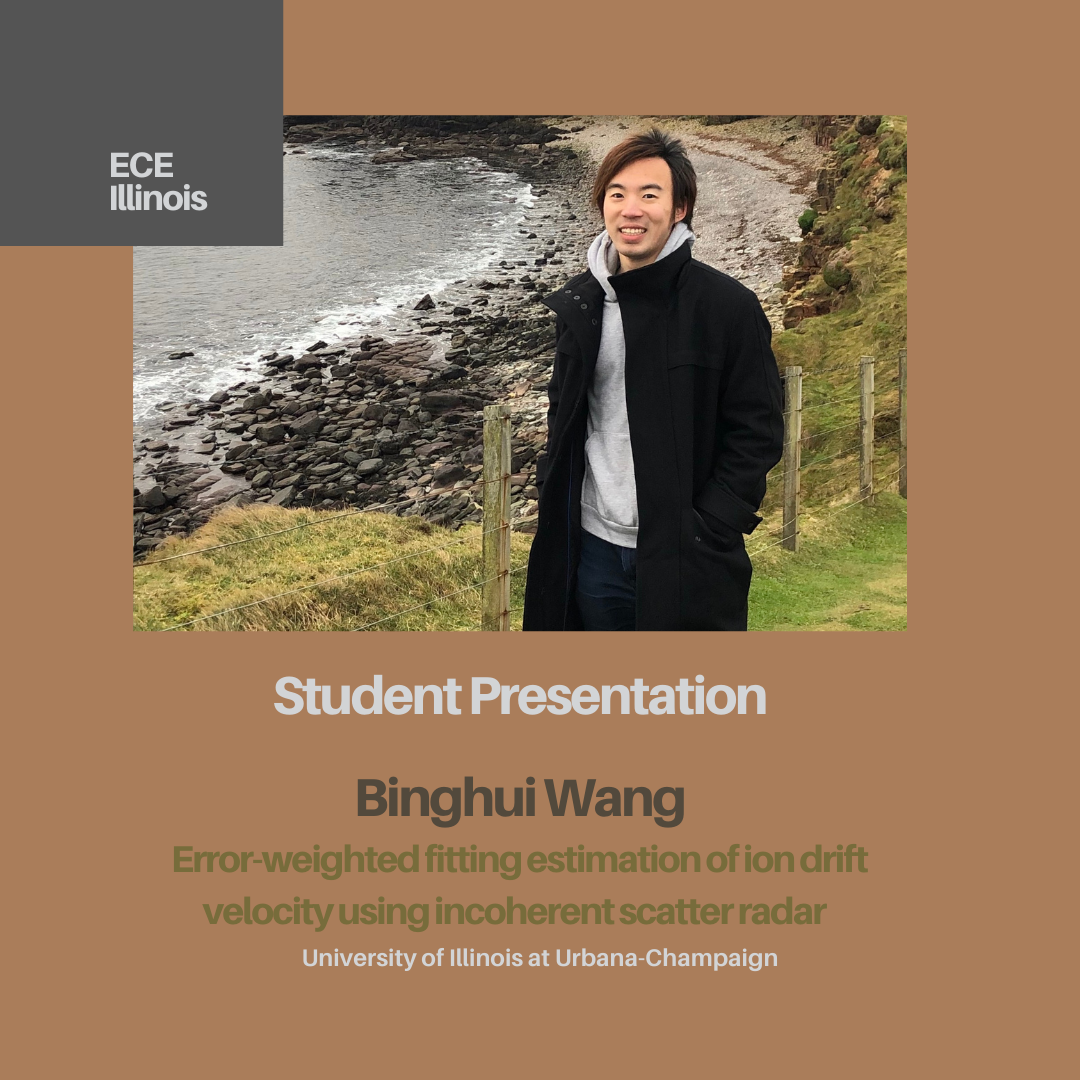
Student Presentation
Speaker: Binghui Wang
Title: Error-weighted fitting estimation of ion drift velocity using incoherent scatter radar
Abstract: Time domain signal processing techniques are commonly employed to obtain bulk measurements of the ion drift velocity in F-region. The measurements are obtained by fitting estimates of the mean autocorrelation function (ACF) of the radar target. To accurately and consistently extract target parameters from the ACF, it is necessary to utilize an error-weighted fitting algorithm with a weight given by the variance of the ACF.
In this presentation, I will start with the first principle of statistics — Gaussian random variable to derive the variance in ACF, then show how the variance propagates in phase angle measurements and thus adding uncertainty in estimating the ion drift velocity. Lastly, a recent velocity estimation result using the error-weighted fitting from my research will be presented.
Bio: Mr. Wang studies the theory of Incoherent Scatter Radar, and employs ISR data to detect and estimate plasma properties of the ionosphere. His research focus is on the development of data processing techniques that can accommodate unprecedented resolution and high efficiency. Through his academic career, Binghui has been a dedicated Teaching Assistant since 2016. In recognition of his outstanding teaching record, he has received the “Excellence in Undergraduate Teaching” award in 2019, and has been selected as one of the Mavis Future Faculty Fellows in 2020. Recently, Mr. Wang has developed a new laboratory manual for the Analog Signal Processing course at UIUC (ECE 210) to further aid student’s remote learning during the COVID pandemic, which further demonstrates his dedication to teaching. In his spare time, Binghui enjoys traveling, learning new languages, and figure skating.

Student Presentations
Speaker: Frank Kelly
Title: Plasma-Assisted Molecular Beam Epitaxy for the Development of GaN-Based Power Electronics
Abstract: Efficient power conversion, storage, and transfer are becoming more and more important every day with applications ranging from the grid to transportation to military use. In order to build the circuits that enable this, highly efficient power devices like diodes and transistors are integral. In this talk, the work is discussed that goes into the building of one of these such devices, the p-i-n diode. We will start with a discussion of the engineering design and physical theory of one of these diodes, then go into how they are made. The process begins with epitaxial growth enabled by plasma-assisted molecular beam epitaxy, followed by conventional and novel semiconductor fabrication methods. Along the way, characterization methods will be outlined in order to give some scope to the work being done.

Invited Seminar
Speaker: Dr. Juvenal George
Dr. George is a licensed clinical phycologist and clinical counselor at The Grainger College of Engineering.
Topic: Stress Management
This lecture will facilitate an in depth conversation about mindfulness and acceptance as strategies to help with stress management. Dr. George will be doing small experimental activities during the lecture to help students practice these relaxation strategies, and possibly have them engage in small discussions.
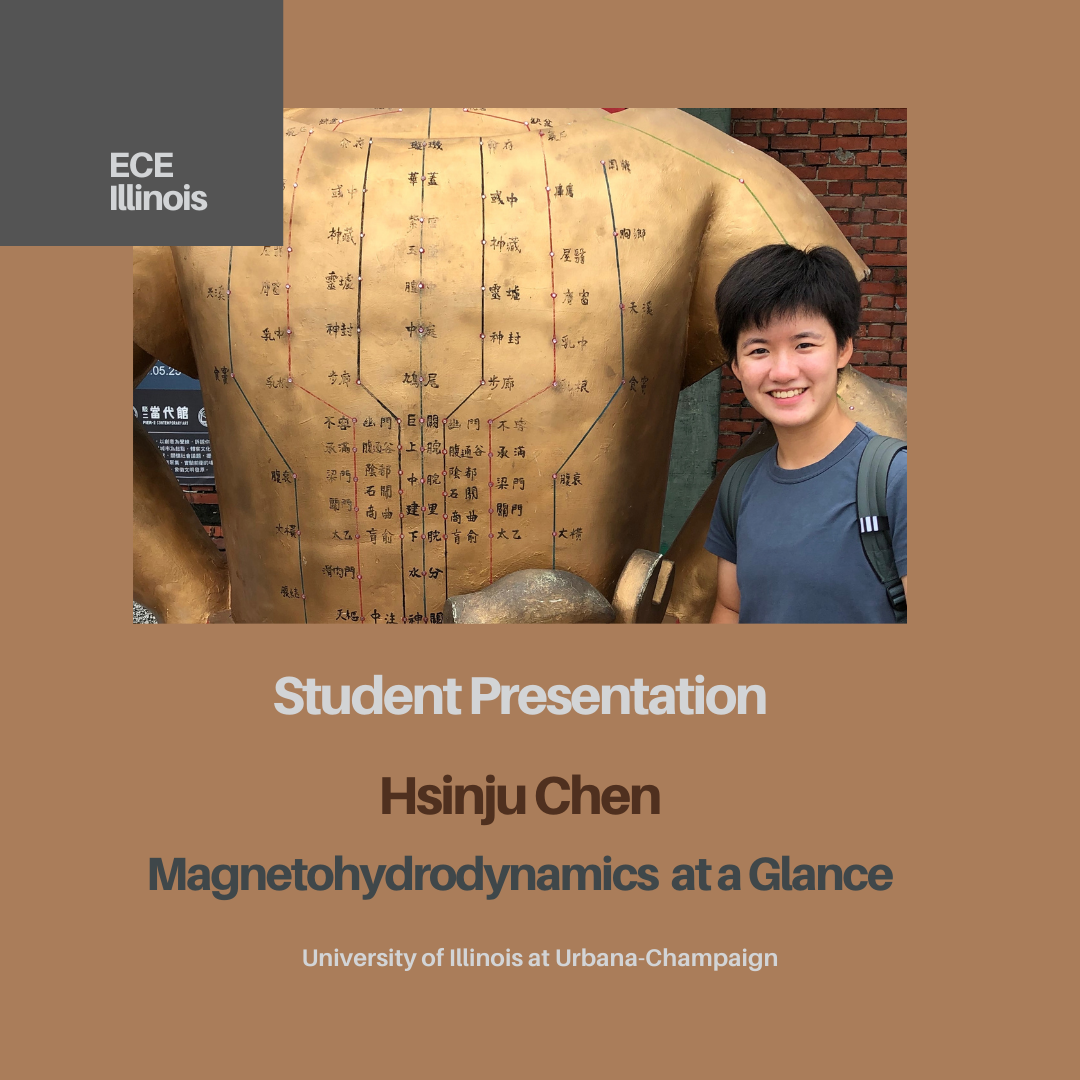
Student Presentation
Speaker: Hsinju Chen
Title: Magnetohydrodynamics at a Glance.
Abstract: The presentation will focus on the basics of magnetohydrodynamics, starting from Maxwell’s equations and kinetic theory, and ending with a brief show case of Hsinju’s research on the global magnetosphere.


Round Table Conversation: “Consent in the Academic Environment”
Topic: Consent in the Academic Environment

Welcome to the FALL 2021 Semester
Effective technical communication is an important aspect of an engineering career. The seminar acts as a forum for the students in the Remote Sensing and Space Science group to practice their research presentations and elevator pitches, and provides a space for open conversations about various topics impacting career paths, such as academic integrity, implicit bias, deciding what’s next after graduate school, etc.
The seminar also serves as a platform for professional development, as the discussions set clear standards to incoming students, introducing them to the inner workings and expectations of the academic and engineering world. It provides a space for students to connect and learn from each other's research, but also a space for growth and for students to form a sense on community. In addition, the seminar accommodates guests seminars by visiting researchers.
During the Fall 2021 semester, students enrolled in the ECE 590 RSS will presents their research topic in a format suitable for a general audience, starting from the relevant fundamental principles.


Invited Seminar
Dr. Zachary Girazian
University of Iowa
Title: From Dust Storms to Comets: How Planetary and Space Conditions Affect the Ionosphere of Mars
Abstract: Ionospheres are layers of plasma embedded in the upper atmospheres of planets. Lying at the boundary between the planet and space, they are affected from below by atmospheric conditions near the planetary surface, and affected from above by space weather. This talk will cover my research into how the ionosphere of Mars is affected by dust storms, the solar wind, and rare close encounters with comets.

Student Presentation
Presenter: Huizi Hu
Title: Interactive Visualization Framework for Space Plasma Data Sets
Abstract: The capability of visualizing numerical data sets to graphs is imperative to our understanding of space physics. However, traditional visualization tools used in the space science community are either proprietary, lack portability or require paid license subscriptions. Therefore we are attempting to resolve these shortcomings by developing a cross-platform, free-to-use, easily set up interactive visualization tools that is accessible to any web browsers.
This project will showcase five different applications based on a Python framework called Dash developed by plotly. These applications are proved to be capable of visualizing 3D space physics data sets including satellite measurements, ground measurements or numerical model simulation results. The first two applications use the Cluster II satellite measurement data set provided by ESA, courtesy of Dr.Elena Kornberg from the Max Plank Institute. The third and the forth applications use the simulated magnetic field data generated by the Tsyganenko magnetic field model. The fifth application visualizes ion density from an empirical model based on geo-tail data while the final application can plot calculation results from the Polar Wind Outflow Model.
By demonstrating advantages of our visualization tool, we hope to show the significance of a generalized framework, which could benefit the entire space science community. Due to the time constraint of this project we did not explore all the options provided by Dash. However, we firmly believe this tool has great potential and will be more powerful with additional features such as parallel computing, cloud computing and the ability to record animations.

Student Presentation
Presenter: Binghui Wang
Title: Measurement of three-dimensional plasma velocities at the Arecibo Observatory
Abstract: The presentation will consist of three parts. First, I will introduce the experiment used in measuring velocity, then signal process techniques in estimating the velocity from the data will be discussed. Lastly some preliminary results will be shown.
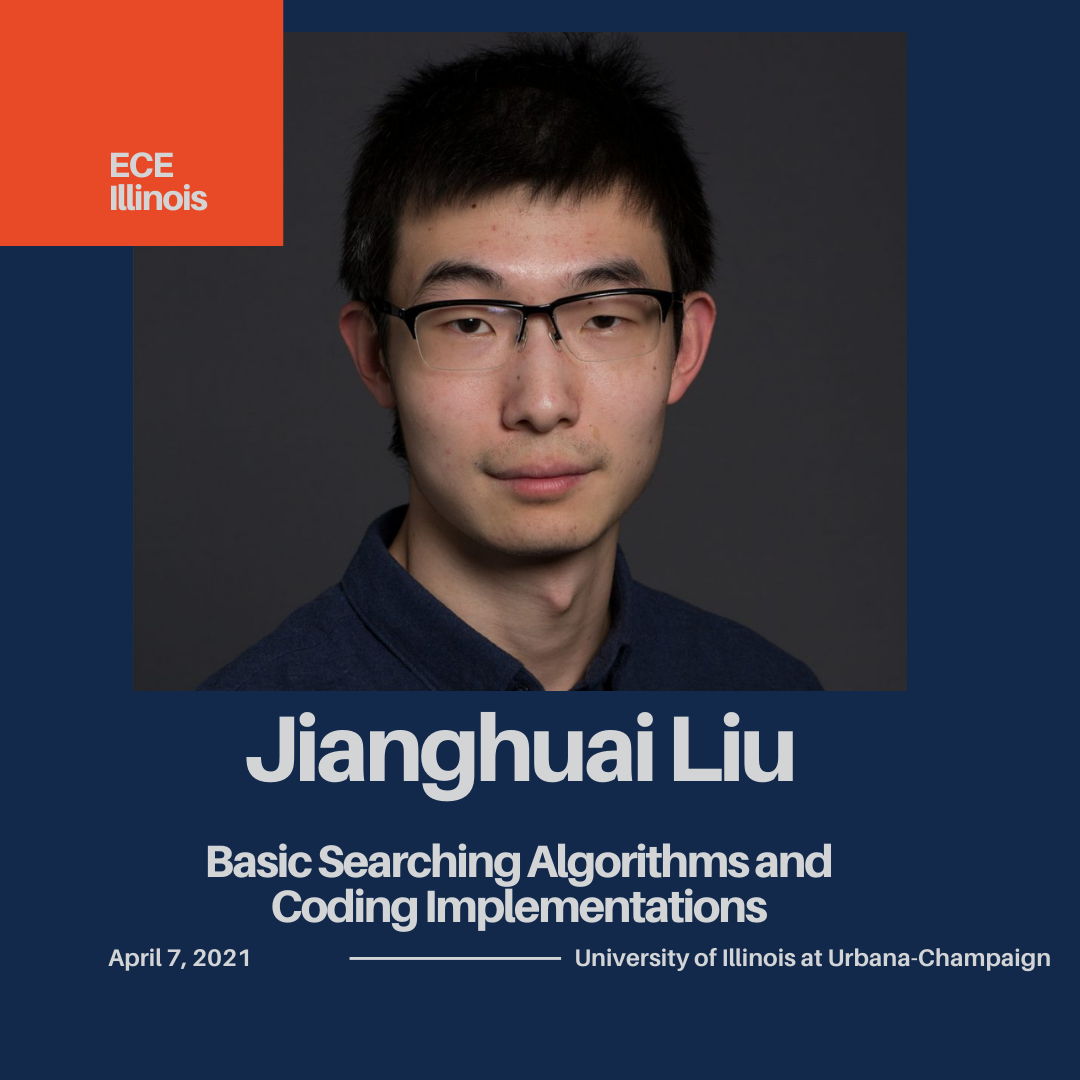
Student Presentation
Presenter: Jianghuai Liu
Title: Basic Searching Algorithms and Coding Implementations
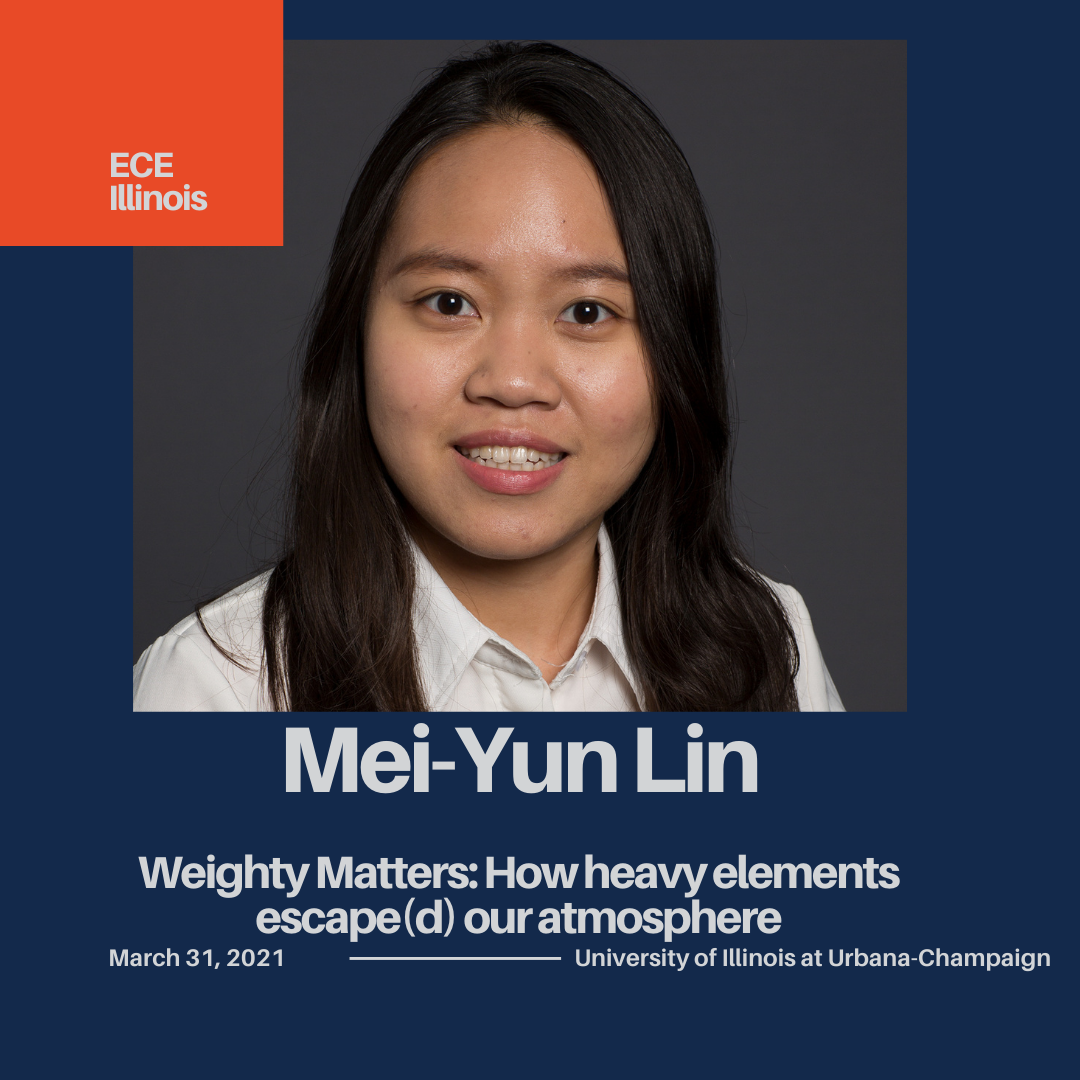
Student Presentation
Presenter: Mei-Yun Lin
Title: Weighty Matters: How heavy elements escape(d) our atmosphere
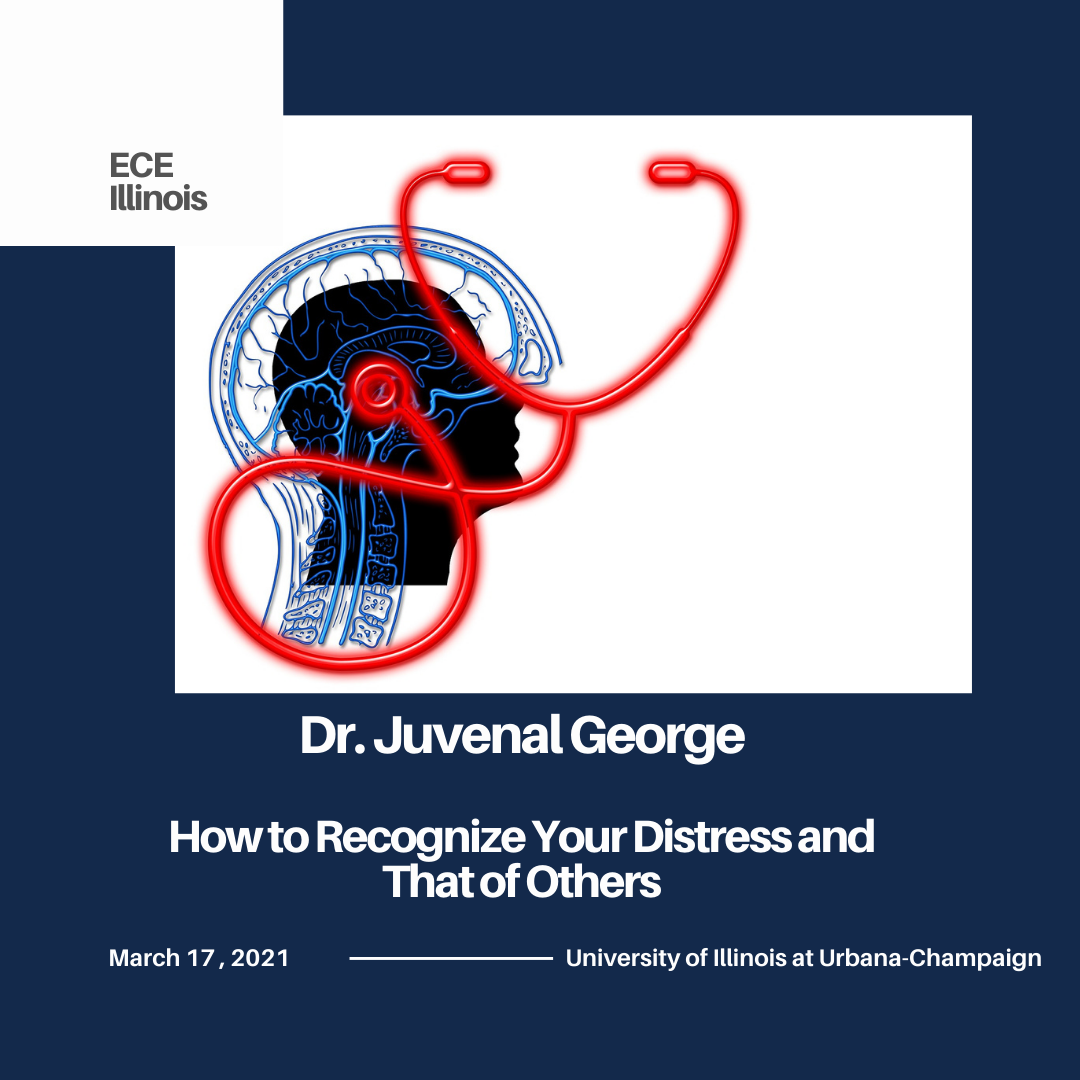
Guest Seminar
Dr. Juvenal George from UIUC Counseling Center will be facilitating a conversation on Mental Health, with an emphasis on how to recognize your distress and that of others, means to address mental health issues, and overcoming the stigma associated with mental health.





Science Meme Competition
Welcome to our Science Meme Competition. Participating students will make a 5 minute presentation on their research topic related meme. The audience will vote on the best one.

AGU 2020 - Practice Talks
Students attending the AGU 2020 meeting are encouraged to practice their science presentations. The audience will provide constructive feedback on effective communication skills.

Student Presentations
Student Speaker: Mohamed Benaissa
Title: Discussion of Paper by Jeffrey J. Love: "On the lognormality of historical magnetic storm intensity statistics: Implications for extreme‐event probabilities"
Abstract: An examination is made of the hypothesis that the statistics of magnetic storm maximum intensities are the realization of a lognormal stochastic process. Weighted least squares and maximum likelihood methods are used to fit lognormal functions to −Dst storm time maxima for years 1957–2012; bootstrap analysis is used to established confidence limits on forecasts. Both methods provide fits that are reasonably consistent with the data; both methods also provide fits that are superior to those that can be made with a power‐law function. In general, the maximum likelihood method provides forecasts having tighter confidence intervals than those provided by weighted least squares. From extrapolation of maximum likelihood fits: a magnetic storm with intensity exceeding that of the 1859 Carrington event, −Dst ≥ 850 nT, occurs about 1.13 times per century and a wide 95% confidence interval of [0.42, 2.41] times per century; a 100 year magnetic storm is identified as having a −Dst ≥ 880 nT (greater than Carrington) but a wide 95% confidence interval of [490, 1187] nT.
Bio: Mohamed Benaissa is a first-year graduate student in Professor Raluca Ilie's group. He graduated with his Bachelor's in Electrical Engineering at the University of Texas at Dallas. His research will be related to the numerical models that describe plasma physics around the Earth.

Student Presentations
Huizi Hu
Title: Interactive 3-D Visualization of Spacecraft Data
Abstract: Existing visualization tools for space science data sets mostly allow for a 2D perspectives in a static environment. In this talk Huizi will present a newly developed 3D interactive and dynamic approach to space data visualizations. Her work includes an browser-based Cluster II data visualization application that constructs projections of plasma parameters on spherical shells. She will also share her update on the application integration of dynamics magnetic field model and iso-surfaces based on machine learning simulations. Finally, she will explore the capabilities of this visualization application on more generalized data sets.
Bio:
Huizi is a graduate student and research assistant in Prof. Ilie’s research group. She finished her bachelor's degree in University of Illinois at Urbana-Champaign. Her main work involves developments of an interactive 3D data visualization platform for space data applications. The motivation is to investigate the underlaying properties of space plasmas under various conditions and she is striving for making this 3D data visualization platform accessible to the scientific community.

Student Presentations
Binghui Wang
Title: Height ambiguity, foe or friend ?
Abstract: Incoherent scatter radars (ISR) can be used to estimate key ionospheric state parameters. Different types of radar pulsing techniques can be chosen to establish some type of a compromise between height and frequency resolution. Typically in long pulse mode, there is a range smearing problem caused by superposition of multiple returns. Many techniques have been invented to resolve the height ambiguity in order to increase the height resolution, however, when the signal to noise ratio is low such as in topside, one has to utilize the range smearing in order to achieve better statistics in the estimation. We hate the range smearing, yet we have to sometimes cooperate with it. In this presentation, a review of basic signal processing in radar is provided, and range smearing problem is then explained. A new approach of utilizing the range smearing is discussed, together with preliminary results of the estimation using the new approach based on data collected from Arecibo.
Bio: Mr. Wang studies the theory of Incoherent Scatter Radar, and employs ISR data to detect and estimate plasma properties ionosphere. His research focus is on the development of data processing techniques that can accommodate unprecedented resolution and high efficiency. Through his academic career, Binghui has been a dedicated Teaching Assistant since 2016. In recognition to his outstanding teaching record, he has received the “Excellence in Undergraduate Teaching” award in 2019, and has been selected as one of the Mavis Future Faculty Fellows in 2020. Recently, Mr. Wang has developed a new laboratory manual for the Analog Signal Processing course at UIUC (ECE 210) to further aid student’s remote learning during the COVID pandemic, which further demonstrates his dedication to teaching. In his spare time, Binghui enjoys traveling, learning new languages, and figure skating.

Halloween Student Talks
Hsinju Chen
Title: Polarization-Agile Stub-Loaded Square Patch Antenna Array with Sequential Rotation Feed
Abstract: Polarization-agile antennas, capable of multipath fading mitigation, frequency reuse, etc., are important in wireless communication, and implementing them on patch antennas allows the design to be low-profile, inexpensive, and very versatile. This sequential rotation polarization-agile patch antenna array consisting geometrically simple reconfigurable stub-loaded square patch antennas and a single switching circuit for reconfiguration is centered at 1.575 GHz for navigation applications and uses a total of fourteen PIN diodes. Its design is realized on Rogers RO4003C boards, with more than 7.3 dBic realized gain at its center frequency for both right- and left-handed circular polarizations.
Bio: Hsinju Chen is a PhD student at Heliophysics Research and Applications (HeRA) in the Department of Electrical and Computer Engineering, University of Illinois at Urbana–Champaign. They received the B.S. degree in Electrical Engineering and M.S. degree in Communication Engineering from National Taiwan University in 2017 and 2020, respectively. Her previous works span from polarization-agile patch antenna arrays to electromagnetics and antenna education in university classrooms. At HeRA, she will focus on studying the impact of energetic heavy ions on the magnetosphere dynamics. Apart from research, Hsinju reads, reviews, and blogs about literature in all genres. They also love theatre, writing, and backpacking.

Student Presentations
Mei-Yun Lin
Title: Do “hidden heavy ions” play an important role in the polar wind study?
Abstract: The source of magnetospheric H+ are both the solar wind the ionosphere, while the low charge state heavy ions, including N+, O+, N2+, NO+ and O2+, can only come from the ionosphere. Albeit limited, several observations show the importance of ionospheric N+ and molecular ions, including NO+, N2+ and O2+, in the high-altitude ionosphere and magnetosphere, opening up the question of the composition of ion outflow. However, the mechanisms responsible for accelerating the ionospheric heavy ions from eV to keV energies are still largely unknown. The abundances of these “hidden heavy ions” and how they change the polar wind solution help understand the energization of these cold ions and reveal the link between lower thermosphere and the ionosphere. Developed from the Polar Wind Outflow Model (PWOM), the Seven Ion Polar Wind Outflow Model (7iPWOM) solves the gyrotropic transport equations for all the relevant ion species (e-, H+, He+, N+, O+, N2+, NO+ and O2+) along open magnetic field lines. However, such a hydrodynamic approach is limited to the region where collisions are important. For the altitudes above the collision-dominated region, the hydrodynamic solution becomes increasingly inadequate, and thus, the 7iPWOM applies a kinetic particle-in-cell (PIC) solution that enables the inclusion of wave-particle interactions (WPI) and Coulomb collision. Preliminary simulations using the 7iPWOM suggest that the N+ ions play a key role in the polar wind solution under all conditions both in the hydrodynamic and kinetic solutions. On the other hand, the difference of the ion density altitude profile of N+ and O+implies the impacts of mechanisms responsible for energization of N+ in the polar wind are different from it of O+, not only in the collision-dominated region but also in the high-altitude region. This means that the local heating sources to O+and N+ in the polar wind, even small amount of it, can induce the plasma instability and then possibly affect the large-scale transport properties. Overall, the inclusion of the hidden heavy ions, including N+ and molecular ions, lead to the improvement of the polar wind solution, strongly suggesting the necessary to consider these “hidden heavy ions” for future ionospheric outflow studies.
Bio: Mei-Yun is a Ph.D. candidate in HeRA group within the Department of Electrical and Computer Engineering in University of Illinois at Urbana-Champaign, advised by Prof. Raluca Ilie. Her primary research focus is understanding the acceleration mechanisms responsible for ionospheric outflow, and its impacts on the magnetospheric dynamics.
Before coming to the United State for graduate school, Mei-Yun obtained the bachelor’s degree in the Department of Electrical Engineering from the National Taiwan Universit, in Taiwan, where she is originally from. She joined the group with almost zero knowledge about the Space Science. However, through her rigorous training at UIUC she quickly developed the skills to become an expert in modeling the ionospheric outflow. Mei-Yun’s woks has been recognized by the American Geophysical Union, where she was awarded the Outstanding Student Presentation Award in 2019. In 2020, Mei-Yun has been elected as the Student Representative of the NSF Geospace Environment Modeling Program, where she will serve for the next two years.
